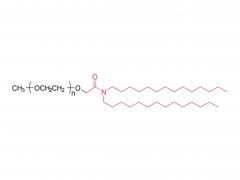Despite the three-dimensional structure of tissues in vivo, the researches on the structures, functions and pathology of human tissues frequently relies on the two-dimensional (2D) model in vitro and animal model. Since the structure of monolayer in vitro model is quite different from the cell microenvironment in vivo, cell behaviors and functions, such as cell–cell interaction and cell-matrix interaction, are greatly affected. Moreover, animal model often fail to repeat the human characteristic because of species differences. Three-dimensional (3D) culture of tumor cell lines has been advocated as the alternative. It is simple and practicable and has the advantage of simulating the cell microenvironment in vivo.
Matrices for 3D cell culture mimic one or more properties of the extracellular matrix (ECM) and tumor microenvironment in vivo. The 3D cell culturing matrices are generally composed of porous structures with diameter less than 300 nm, which can provide enough space for the growth of cells. The cancer cells can form 3D aggregates or spheroids inside the matrix. According to the main component, 3D cell culture matrices can be divided into two main categories: matrix based on natural materials and matrix based on synthetic materials. Matrices based on natural materials can provide a biological environment, but the mechanical performance of materials is commonly poor and the batch-to-batch discrepancy cannot be completely eliminated. Natural materials are usually used to form hydrogel composites. Synthetic scaffolds are polymers like Polyethylene glycol (PEG), Polylactide (PLA), Poly(lactide-co-glycolide) (PLGA/PLG) which are biodegradable and easy to reproduce. Among these materials, the thermogelling synthetic copolymer hydrogels with a sol-gel transition exhibit lower critical solution temperature (LCST) behavior, which is meaningful for a 3D cell culturing matrix. When the sol gel transition temperature of smart hydrogel is between 5℃ and 37℃, the matrix has advantages in further separation of materials and cell aggregates.
Hydrogels have received extensive attention in tissue engineering and 3D cell culture, owing to their inherent properties such as flexible matrix, high water content, and responsive network structures. Hydrogels can be formed both chemically and physically. PEG hydrogels are excellent candidates as biomaterials because of their potential for incorporating both biophysical and biochemical cues and their prevention of non-specific protein adsorption, biocompatibility and FDA approval for use in humans. Thermo-sensitive hydrogel based on PLGA-PEG-PLGA tri-block copolymers has been used for delivery of proteins and water-insoluble drugs. The proper LCST and good biocompatibility of PLGA-PEG-PLGA tri-block copolymers make it a good choice for in vitro cell culture matrix.
References
1. Caldwell A. S., Aguado B. A., Anseth K. S. Designing Microgels for Cell Culture and Controlled Assembly of Tissue Microenvironments. Adv Funct Mater, 2020, 30(37).
doi:10.1002/adfm.201907670
2. Ying G., Jiang N., Parra C., Tang G., Zhang J., Wang H., Chen S., Huang N. P., Xie J, Zhang Y. S. Bioprinted Injectable Hierarchically Porous Gelatin Methacryloyl Hydrogel Constructs with Shape-Memory Properties. Adv Funct Mater, 2020, 30(46).
doi:10.1002/adfm.202003740





















